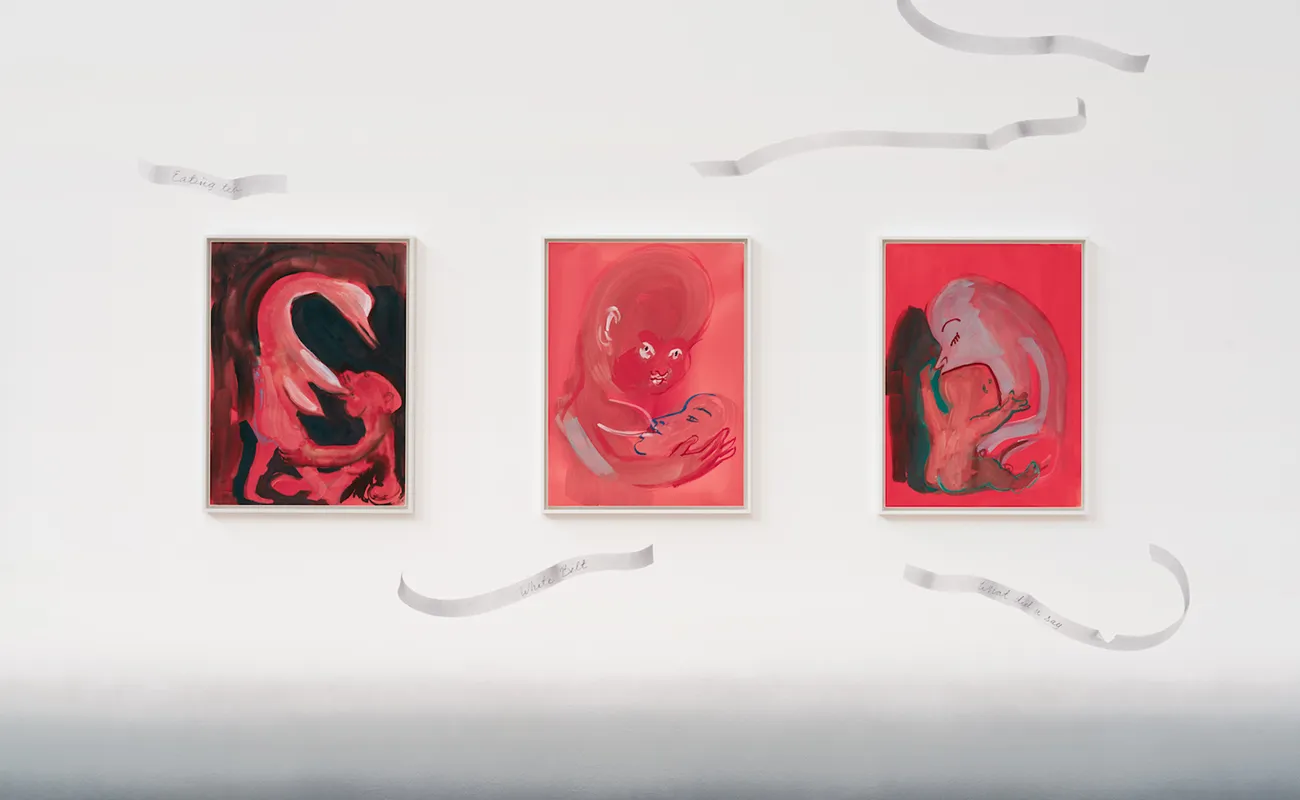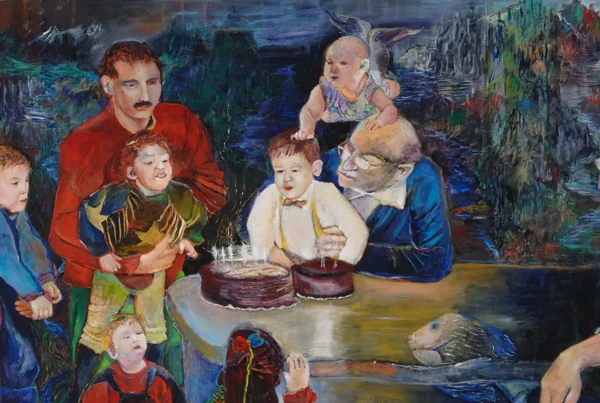A Parisian Genesis
Growing up in the bustling artistic landscape of Paris, Camille Henrot was nurtured in a culture steeped in rich artistic traditions. Born in 1978, her early life in this historic city proved to be a fertile ground for her budding creativity. Henrot’s academic journey at the École Nationale Supérieure des Arts Décoratifs became a pivotal chapter in her development, where she honed her skills in film animation. This period not only equipped her with technical prowess but also instilled a profound appreciation for the diverse spectrums of visual arts. Her time assisting the renowned Pierre Huyghe further exposed her to a range of visual storytelling approaches, particularly in dynamic fields like advertising and music videos, thereby enriching her narrative techniques and artistic versatility.
The influence of Henrot’s Parisian roots and educational experiences is evident in her eclectic artistry. The city’s historical aura combined with rigorous academic training at one of its premier institutions provided Henrot with a foundational platform that would inform her diverse artistic endeavors. Through early career experiences, particularly her collaboration with Huyghe, she absorbed the essence of integrating narrative depth with visual appeal. These experiences collectively fostered a robust framework that underpins her multifaceted career, allowing her to seamlessly navigate and innovate across various mediums.

Camille Henrot: The Language of Mediums
Henrot’s artistic oeuvre is characterized by an impressive fluency in multiple artistic languages—from film to sculpture and beyond. She likens her process of navigating these diverse mediums to speaking different languages, each with its unique vocabulary and emotional resonance. This analogy beautifully captures her approach to art: a dialogue with materials and forms that transcends conventional boundaries. Her works are a testament to her ability to not only master multiple mediums but to weave them together in ways that enhance their narrative and thematic potencies. Driven by a relentless curiosity and an anthropological lens, Henrot explores the intersections of information, myths, and personal narratives, making each project a deep dive into new intellectual and aesthetic territories.
This multidisciplinary approach is pivotal to Henrot’s creative philosophy. Whether she is crafting an intricate sculpture or staging an immersive video installation, her goal remains consistent: to probe and unpack the narratives embedded within her chosen subjects. By leveraging the specific strengths of each medium, Henrot ensures that her artistic message is not just communicated but felt, allowing audiences to experience a rich tapestry of thematic exploration. Her skill in fluidly moving between different artistic forms is not just a technical ability but a strategic tool that amplifies the impact of her work, making each piece a unique reflection of her overarching vision.

The Echoes of Myth and Information
Camille Henrot’s internationally acclaimed piece, Grosse Fatigue, marked a significant point in her career, capturing the relentless pace of contemporary information consumption. The inspiration for this work blossomed during her fellowship at the Smithsonian Institution, where she was struck by the immense repositories of knowledge and the human endeavor to categorize and control information. In Grosse Fatigue, Henrot attempted to narrate the creation of the universe through a vibrant collage of images and sounds, presenting a visual and auditory overload that mirrors the chaotic influx of information in the digital age. Collaborating with writer Jacob Bromberg and musician Joakim, she crafted a multimedia experience that blends scientific insights with mythical narratives, thereby challenging the viewer’s perception of knowledge and its accumulation.
Following the success of Grosse Fatigue, Henrot continued to explore similar themes with The Pale Fox, an ambitious installation that delved deeper into the human quest for knowledge and its organizational systems. Through an architectural ensemble of drawings, sculptures, and digital images, the installation presented a meticulous study of how we categorize and comprehend the world around us. Henrot’s work in The Pale Fox reflects her ongoing fascination with the arbitrary ways knowledge is structured and the cultural implications of these systems. By engaging with objects as diverse as her mediums, Henrot invites her audience to reflect on the material and conceptual ways we organize and understand our environment, making her installations sites of intellectual as well as aesthetic engagement.

Camille Henrot: Exploring Authority and Cultural Narratives
In more recent years, Henrot’s artistic inquiry has shifted towards examining power dynamics and authority, as exemplified in her series Bad Dad & Beyond. This series, comprising watercolors and interactive sculptures, scrutinizes the role of authority figures and the inherent power relations in personal and societal contexts. Through this series, Henrot addresses a theme both intimate and universal, using art as a medium to question and destabilize traditional notions of authority. Her approach invites the viewers to interact with the artworks, encouraging a participatory experience that enhances the reflective process. This interactive aspect not only enriches the viewer’s engagement with the art but also amplifies the thematic exploration of power and control that Henrot seeks to highlight.
Another facet of Henrot’s work involves her engagement with specific cultural narratives, particularly evident in her exhibition Egyptomania. This project explores the enduring impact of ancient Egyptian culture on modern society, particularly its commodification and reinterpretation. Through Egyptomania, Henrot critiques how contemporary cultures consume and reinterpret historical narratives, often stripping them of context and reducing them to aesthetic symbols. Her work pushes audiences to reconsider the ways in which historical narratives are constructed and the implications of these constructions on our understanding of history and culture. In doing so, Henrot not only offers a critique of cultural appropriation but also fosters a dialogue between the past and the present, challenging viewers to think critically about the sources and structures of their knowledge.






